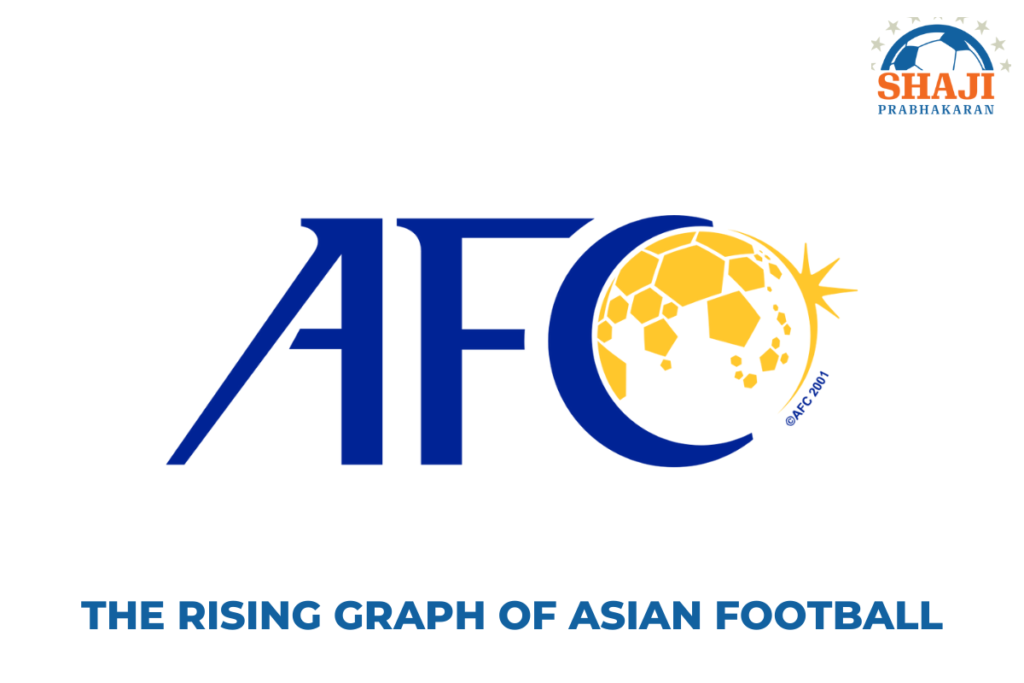FIFA Council on 10th January 2017 approved the plan of Gianni Infantino FIFA President to increase the number of participating teams from 32 to 48 in the World Cup starting from 2026
The first World Cup in 1930 was played with 13 teams, in 1934 with 16 and in 1982 the World Cup in Spain saw an increase of teams to 24 after the 10th edition of the World Cup. The next major addition came in 1998 when the World Cup was played with 32 teams and this latest addition of 16 teams is by far the biggest addition of teams to 48 in the history of the FIFA World Cup. The impact of this increase will be multiple and, this decision will be widely and passionately discussed and debated for the next decade, post the 2026 World Cup. This significant increase will certainly further inspire many countries to dream big to be part of the World Cup in 2026 and beyond. The FIFA World Cup is the biggest showpiece sporting event and for many countries it is still a dream, with additional berths from 2026 many dreams will come true i.e. 23% of the Member Associations will have the opportunity to be part of the World Cup. With the increase in teams, 16 more countries will have the opportunity to attract the best possible investment following the qualification to the World Cup. Thus, the development of football will receive a significant boost and the football economy of the country which qualifies will grow significantly. What’s in it for FIFA? FIFA’s own revenue will increase by an additional US$1b as per the report due to this decision, most of the revenue will come from the sale of television rights. With FIFA’s current development budget of US$1.4b and with the increase in revenue base FIFA will be able to provide additional funds to each of the Member Associations, currently each of the Member Associations is entitled to a minimum of US$5m for a four-year cycle since the election of the new FIFA President in 2015 towards development of football. World Cup participating countries will certainly receive higher participating fees and prize money. During the 2014 FIFA World Cup each of the participating countries received US$1.5 m as participating fee, group stage eliminated teams (16 teams) received US$8m each, Round of 16 losers US$9m each, quarter-final losers $14m each, 4th placed team $18m, 3rd placed $20m, runner up $25m and the winner $35m. Therefore, the minimum the team received was $9.5m, and the maximum of $36.5m (the winner). The Biggest Beneficiaries Asia and Africa will certainly be the biggest beneficiaries if both continents are given a minimum of 4.5 or 5 additional slots. These two continents deserve more births compared to any other continents and whenever the decision arrives regarding the redistribution of continental slots it will be a fair one, this is the best opportunity to make a balanced decision considering the current global realities of football, potential, and the economy. I believe this decision will arrive within the next few months and most probably just before or during the next FIFA Congress in May 2017. How will the Football Clubs Benefit With 48 teams playing in the World Cup players from more clubs will be a part of the World Cup, during the 2014 World Cup FIFA distributed US$70m to all the clubs, as a fee to the clubs whose players played in the World Cup and thus many more clubs are likely to benefit from this kind of fee in 2026 too and most likely the fee will be far higher than what it was in 2014? The Challenge of Hosting a 48-Team World Cup
To host a 48 team World Cup will be an enormous challenge considering the scale of logistics associated with the World Cup
It would be difficult for a single country to provide a significant number of training bases for 48 participating teams and put in place all the required infrastructure, and if the current trend continues then 50% more fans are likely to travel for the games. The number of matches will be 80 compared to the current 64 and considering the current global security threat on all major global events it will be a huge task for one country to take that significant load (except China). Therefore, all likely the 2026 World Cup will see joint hosts and it won’t be surprising to see more than two countries hosting the World Cup for the first time. The host nation or nations for 2026 will only be known by 2020 and the entire bidding process will be finalized in the next few months. The entire bidding process will be closely monitored and the scrutiny will be at an all-time high considering the past controversies involving the selection of hosts and it is for the first time that the host or hosts of the World Cup will be decided by the FIFA Congress and not by the FIFA Council (Ex FIFA Ex co). The impact of the 2026 World Cup on the fastest-growing economies
By 2026 the performance gaps between the continents will be further narrowed
Thus fans won’t be seeing lopsided contests at the World Cup stage. Asia will surely improve significantly by that time and the teams qualifying from Asia will be highly competitive because of the heightened development work which is taking place in Asia currently. China China has initiated numerous projects to develop the beautiful game and the investment the game is seeing in China is mind-boggling. The central government and its leadership have made football its priority sport and there are numerous projects that are taking place, if sustained then no doubt that Chinese football will be a dominating force not only in Asia but also in the World by 2026 and in terms of investment currently China is already leading the race. Increased slots only brighten the chance of China being a part of the World Cup for the second time if they miss the Qatar 2022. China wishes to host the World Cup as early as possible and if 2030 doesn’t go to the South American continent due to World Cup centenary year then China will be a much stronger contender to host the World Cup in 2030. For China to host 48 teams won’t be a difficult proposition considering their economic scenario and where their infrastructure strengths are concerned. India India’s prospects to be part of the World Cup certainly brighten with the increase of slots in the World Cup. Qualification rounds will begin as early as 2023 for the World Cup in 2026 and that means it is just 6 years away. Therefore, the current batch of players from India’s U23, U20, and U17 national teams will prominently form the national side in 2023. Considering the gap that exists today between India and the top 10 countries in Asia many will outrightly reject India’s chances to qualify for the World Cup 2026 but there is a way out for India to quickly jump to the top 10 in Asia within the next 5 years through a committed all round work and I would say India has a 10% chance to be part of the World Cup in 2026 under a strategic blueprint. World Cup 2026 and beyond would be a great success if China and India, the two most populated and fastest-growing economies become part of this global showpiece event. The potential is huge in both countries and fortunately both these countries are making a sincere effort to lift the game in their respective countries through their own ways. China is much more fortunate than the government and business community, both are investing world-record sums in football to change the landscape of the game but at the same time, India is only attracting approx. 10% of investment what its neighbor is receiving in the beautiful game.
FIFA will be able to attract higher revenue if both China and India made it to the world cup and that would be a win-win situation for global football.
Asia’s investment in football is growing at a significant pace and the scenario of India and China playing the World Cup would mean Asia playing a lead role in shaping the future of global football. That day will come when Asia will be in a dominant position and the increase of teams in the World Cup will only brighten its chance to be in the forefront of world football. The Challenges
Today’s world is only becoming unpredictable and what would be the global economic scenario post 2020 or 2025 is not easy to predict
Revenue Numbers If the current global economic situation does not improve then the anticipated revenue numbers might not be met and that is one of the biggest risks going forward. As the significant revenues will come from selling broadcasting and TV rights and if the shape of the broadcasting industry gets stronger then income will certainly be higher or there is a slight possibility that numbers might be tough to meet and the bottom line target will be a tough challenge to meet. Global Security Further, the global security situation is also another challenge that is only getting worse, and if the mega global events security threat perception only goes up then that would put another high challenge to bigger events in the future. The Value of Football The other bigger challenge is the perception of football itself. Due to high corruption cases involving many big wigs of the game and frequent match-fixing episodes in the last few years, the overall value of football has taken some beating but the global football authorities are trying their best to improve the overall governance of football through various new measures and this work should never stop. The world wouldn’t like to see any repeat of further corruption cases involving big personalities of football and any repeat would mean a huge blow to the beautiful game in preserving its values and engaging a significant world population in the game. The Critics? There is not much scope for anyone or critics to find any major faults in the decision to increase the teams to 48. Very few organisations and individuals have made comments against the decision but the global showpiece event is going to finish within 32 days which is not very different from the 32-team World Cup. The players’ community, Member Associations (211), Broadcasting Industry, Brands, Fans, Coaches, etc., all have welcomed the decision in the right spirit as to who doesn’t want to be part of the biggest showpiece event on the planet. All eyes will eagerly be waiting for 2026 and no doubt that the World Cup qualification competitions which will start in 2023 are going to be very interesting and the importance of many matches at the qualification round will significantly increase which is going to be a great situation for global football. Some would say an increase to 40 teams would have been very appropriate and that was the initial plan that has been under discussion since 2013 but considering all the above situations a 48-team World Cup looks like a better scenario for the accelerated growth of football across Asia and Africa. Whatever, I am sure it is the last expansion of the World Cup and no way will anyone in the future find it appropriate or logical to increase the teams to 60 or 64. It would be a crazy-crazy affair if one goes for that unnecessary adventure in the near future. I hope that World Cup 2026 will be the best World Cup ever and all the previous records will be shattered, whether it is the number of goals, a maiden champion, stadium attendances, TV ratings, record revenues, etc. Can’t wait for 2026 to arrive quickly and enjoy the World Cup. Long Live the World Cup!



